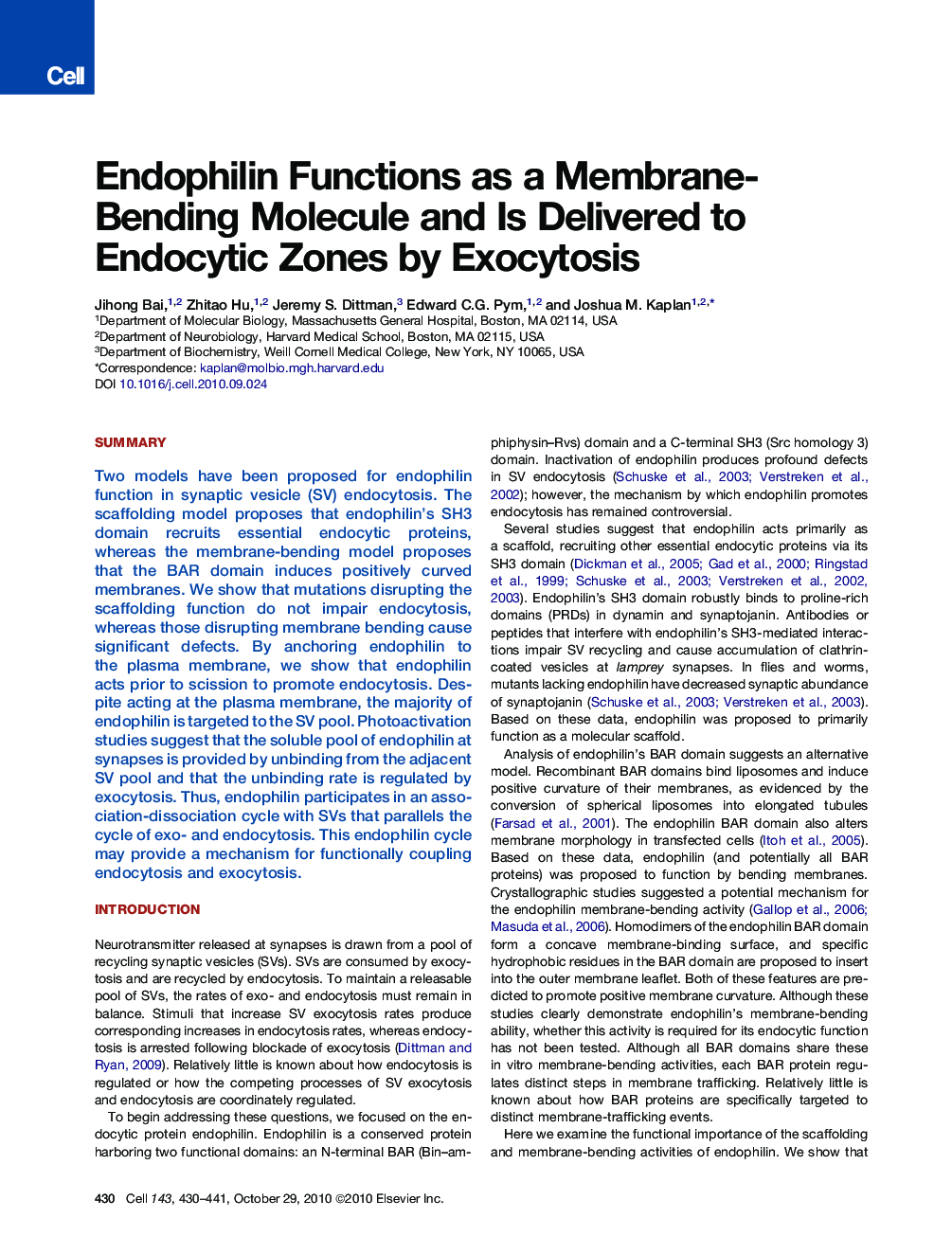| Article ID | Journal | Published Year | Pages | File Type |
|---|---|---|---|---|
| 2036597 | Cell | 2010 | 12 Pages |
SummaryTwo models have been proposed for endophilin function in synaptic vesicle (SV) endocytosis. The scaffolding model proposes that endophilin's SH3 domain recruits essential endocytic proteins, whereas the membrane-bending model proposes that the BAR domain induces positively curved membranes. We show that mutations disrupting the scaffolding function do not impair endocytosis, whereas those disrupting membrane bending cause significant defects. By anchoring endophilin to the plasma membrane, we show that endophilin acts prior to scission to promote endocytosis. Despite acting at the plasma membrane, the majority of endophilin is targeted to the SV pool. Photoactivation studies suggest that the soluble pool of endophilin at synapses is provided by unbinding from the adjacent SV pool and that the unbinding rate is regulated by exocytosis. Thus, endophilin participates in an association-dissociation cycle with SVs that parallels the cycle of exo- and endocytosis. This endophilin cycle may provide a mechanism for functionally coupling endocytosis and exocytosis.
Graphical AbstractFigure optionsDownload full-size imageDownload high-quality image (266 K)Download as PowerPoint slideHighlights► In synaptic vesicle (SV) endocytosis, endophilin acts as a membrane-bending molecule ► Endophilin functions at the plasma membrane, acting prior to scission ► Endophilin is bound to SVs, with RAB-3 promoting the endophilin-SV association ► A soluble endophilin pool at synapses is provided by SV exocytosis
